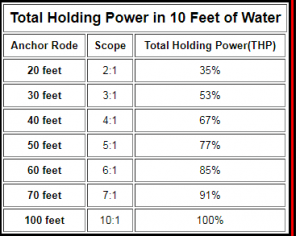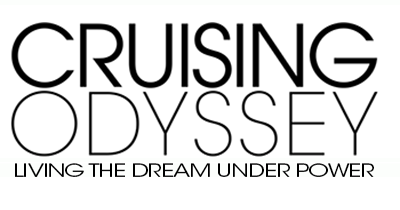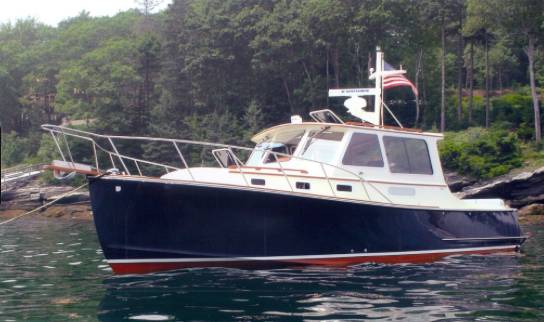It’s not news that we’re supposed to put out 7:1 scope so our anchors will hold in normal conditions. But what was news to me was this chart from Captain John at Skipper Tips showing the odds of an anchor holding at greater or lesser scope. A 5:1 scope has a 77% chance of holding, for example, while a 10:1 scope gives a 100% chance. Take a look at this good story and chart from Skipper Tips:
“Scope gives a ratio that shows the amount of anchor rode for each foot of water depth. For example, let’s say you are anchored in 10 feet of water. If you put out 70 feet of anchor rode, you have 7 feet of rode per foot of water depth, or a 7:1 scope.

“Try to put down a 7:1 scope in moderate weather and a 10:1 scope in severe storm or hurricane conditions. In tight anchorages or if you have all-chain rode, you might have to use 5:1 scope. Put out a second anchor for more security.
“Cruising veteran Pat Piper’s table provides a real eye-opener that shows how scope affects your anchor’s Total Holding Power (THP). This table shows holding power in 10 feet of water.
“Notice the total holding power fails to reach 75% until you have a scope of at least 5:1. Which just goes to prove the well-worn adage that 7:1 should be the baseline for anchor scope.
“Cruising boats with all chain rode may choose to use less rode (about 5:1) in normal conditions (i.e. moderate wind, current, swing room). The sheer weight of the chain will help keep the rode closer to the bottom. As in all of anchoring, you want to keep as much horizontal pull on a rode as possible.
“Adjust your scope to the present or expected conditions. In storm conditions, use tandem anchors.” For more: http://skippertips.com




